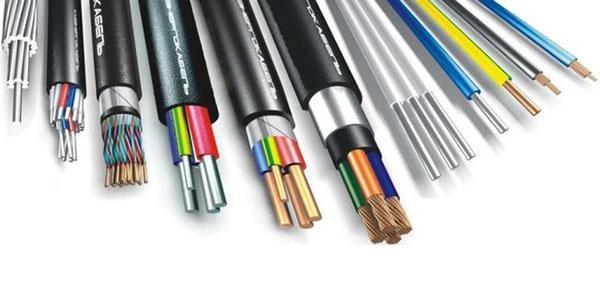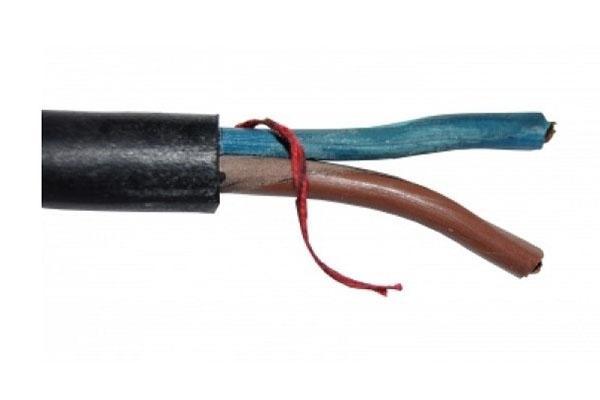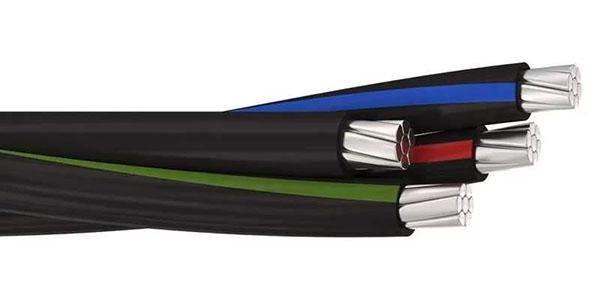Wire color marking for the household sector
 The wiring in a private house must be switched by color. The best answer on how to mark wires by color is given by GOST R 50462. But unfortunately, practice shows that electric lines in the private sector are often made not with the material they should, but with what they have. This article does not cover other technical aspects of the wiring device. The following information gives an idea of how the conductors should be color coded correctly and how to get out of the situation in case of a mismatch.
The wiring in a private house must be switched by color. The best answer on how to mark wires by color is given by GOST R 50462. But unfortunately, practice shows that electric lines in the private sector are often made not with the material they should, but with what they have. This article does not cover other technical aspects of the wiring device. The following information gives an idea of how the conductors should be color coded correctly and how to get out of the situation in case of a mismatch.
Conductors can be painted in their entirety or marked with a thin colored stripe along the entire wire insulation. We also produce two-color cable products.
Phase and neutral wire color in the lead-in cable

- With a wire of the SIP type, the phase conductor will have a colored stripe (usually yellow, green or red). Zero core is black.
- With a cable such as AVVG or VVG, then the neutral conductor is blue, white, red or green - phase.
- Cable type KG - brown phase wire, zero - blue.
If the input is three-phase:
- A wire of the SIP type and there are, in addition to the two primary colors red and green, blue and black wires - the neutral wire will be necessarily black.
- A cable of the AVVG or VVG type will be blue, and one of the phase conductors, in addition to red and green, will be black or white.
- Cable type KG zero - blue, brown and two black - phase conductors.
 Cable products are often manufactured not according to GOST, but according to technical specifications. Therefore, even in a two-core SIP with black and blue cores, the black wire will be zero. The black wire has a steel core, which performs the self-supporting function of the wire. Connecting the input to the house from overhead lines with a VVG and KG cable is not recommended.
Cable products are often manufactured not according to GOST, but according to technical specifications. Therefore, even in a two-core SIP with black and blue cores, the black wire will be zero. The black wire has a steel core, which performs the self-supporting function of the wire. Connecting the input to the house from overhead lines with a VVG and KG cable is not recommended.
Internal wiring
 Wiring inside the house is carried out only with single-phase lines and copper wires.
Wiring inside the house is carried out only with single-phase lines and copper wires.
In electrical circuits used for domestic purposes, the working zero must always be blue!
According to the PUE, intra-house lines must be laid with a grounding conductor. In all three-core conductors made in accordance with GOST, suitable for internal work, the ground wire is yellow-green.
If the three-core conductor is flexible, type PVA, then the phase conductor is usually brown. For inside house wiring, it is better to use cast copper wires. If the conductors are marked with stripes, then the conductor with a stripe of any color excluding blue and yellow-green is phase. If there is no yellow-green conductor in the cable, use a conductor with a green stripe as the grounding conductor. The ground wire can be marked in pure yellow. In cables, the conductors of which are completely painted, the white wire is phase.
Electric stove lead
 A 220V household electric stove is connected to a special socket that can withstand high power. The color of the veins is found red, green, blue, where red is the phase, green is the ground, blue is the neutral conductor. There is a nuance, in electric stoves and hobs of foreign production, designed for 220 / 380V, the connection is carried out with a four-core conductor:
A 220V household electric stove is connected to a special socket that can withstand high power. The color of the veins is found red, green, blue, where red is the phase, green is the ground, blue is the neutral conductor. There is a nuance, in electric stoves and hobs of foreign production, designed for 220 / 380V, the connection is carried out with a four-core conductor:
- blue - zero;
- yellow-green conductor - ground;
- black conductor - phase A;
- brown conductor - phase B.
It is allowed, when connected to one phase, the network to combine the phase conductors on the electric stove under one contact terminal.
Neutral wire
 A neutral conductor is a wire connected to the midpoint (zero) point of an electrical system. In the standard connection diagram, this is a combined zero working and zero protective conductor in a three-phase circuit. The color of the neutral wire is all blue with yellow-green ends or all yellow-green with blue ends.
A neutral conductor is a wire connected to the midpoint (zero) point of an electrical system. In the standard connection diagram, this is a combined zero working and zero protective conductor in a three-phase circuit. The color of the neutral wire is all blue with yellow-green ends or all yellow-green with blue ends.
Wire designation phase, zero, earth
 The wires are marked by color, letters and numbers. GOST before 2009 more broadly interpreted the possibilities of wire marking. Since 2009, the standards have been revised towards a clearer color classification and the removal of notes to avoid marking conductors. The national standard 2009 clarified the terminology and supplemented the alphanumeric classification. For electrical circuits until 2009, the classic color of conductors was used: yellow, green, red.
The wires are marked by color, letters and numbers. GOST before 2009 more broadly interpreted the possibilities of wire marking. Since 2009, the standards have been revised towards a clearer color classification and the removal of notes to avoid marking conductors. The national standard 2009 clarified the terminology and supplemented the alphanumeric classification. For electrical circuits until 2009, the classic color of conductors was used: yellow, green, red.
In the classic version of three-phase circuits up to 1000 volts, the conductors are marked in the following combinations:
- Phase A - L1, yellow - brown is recommended.
- Black is recommended in phase B - L2, green.
- Phase C - L3, red - gray recommended.
- Zero conductor - N blue.
- A combined working zero with a grounding conductor - PEN, blue with yellow-green tips - yellow-green with blue tips.
- Grounding conductor - PE, yellow-green.
This combination does not imply either direction of rotation or phasing.
What color is the phase and zero
 In single-phase lines without a grounding conductor, the phase conductor is marked in red, zero - in blue. The combination of phase - white, neutral wire - blue is also often found. The worst combination of wire color, phase, zero, ground found in the color of conductors - white, red, black.
In single-phase lines without a grounding conductor, the phase conductor is marked in red, zero - in blue. The combination of phase - white, neutral wire - blue is also often found. The worst combination of wire color, phase, zero, ground found in the color of conductors - white, red, black.
If we take identification standards, the phase wire should be red, black - grounding conductor, white - zero. But from practice it is better to make zero red, and the phase white. Visually, the neutral conductors will be better visible. There is a danger of mixing phase and neutral conductors made of different materials! It is better to mark the ends of the conductors with insulating tape in standard colors.
Wire color marking for DC lines
 DC conductors are recommended to be painted as follows:
DC conductors are recommended to be painted as follows:
- plus pole - red (brown insulation is recommended);
- negative pole - blue (gray is recommended);
- a grounding conductor in a three-wire DC circuit - blue (since 2009, blue has been recommended).
The polarity of the wires can be determined more easily by color. Cold colors - negative terminal, warm colors - positive. If there are taps in a three-wire DC electrical circuit, then the outgoing lines must be the same color as the supply ones. What color the plus and minus wires were not painted, you must mark them with an alphanumeric marker.
Electrical wire colors
 Even GOST is not mandatory. Conductors can be colored black, blue, green, yellow, brown, red, orange, purple, gray, white, pink, turquoise. Prohibitions on the use of yellow and green are clearly stated.
Even GOST is not mandatory. Conductors can be colored black, blue, green, yellow, brown, red, orange, purple, gray, white, pink, turquoise. Prohibitions on the use of yellow and green are clearly stated.
The cable may not contain a conductor marked with a double color, in combination with yellow or green with any other than only one yellow-green conductor.
To avoid confusion, it is better to put heat-shrinkable tubes of classic colors on the ends of the conductor. A 10 cm tube of the desired color is enough. The opinion in this article is subjective and contains only a recommendatory character based on the expectation that all other rules for the installation of electrical installations will be observed.